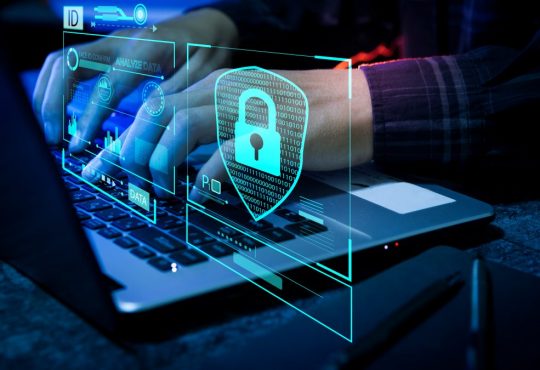
Imagine a world where your personal information is unique and secure, and security measures like one-time passwords and other authentication methods are impenetrable. Knowing your digital identity is safe in this ideal world, you can enjoy your privacy and peace of mind.
However, this is far from reality. Bad threat actors constantly develop new ways to steal personal information for financial gain or other malicious purposes. In the first half of 2023 alone, there have been 5,60,000 identity theft cases, as reported by FTC.
Identity theft is a crime where threat actors steal personally identifiable information such as name, address, social security number, bank details, and more to impersonate another individual. Hackers then leverage this information to take loans, withdraw money, open bank accounts, and conduct other threats.
Fortunately, individuals can take several measures to prevent identity theft and protect against such catastrophic threats.
5 ways to protect against identity theft
Identity theft not only causes significant financial loss but also emotional distress. Identity theft could also lead to data breaches, loss of sensitive and confidential information, and malware in enterprise networks. Here are several ways to protect against identity theft:
- Safeguard your personal information
As simple as it may sound, protecting sensitive information like social security numbers and credit card details is crucial. Loss of this information can lead to wrongful impersonation, data breaches, and more.
Individuals must be careful before sharing their personal information with anyone and enquire why it is required and how it will be used. Hackers often mask themselves as legitimate telecallers requiring bank information. In such instances, individuals should directly contact customer care or visit the branch to verify the demand for such information.
Hackers can also create synthetic identities by knitting together fragments of information from different people, such as a child’s Social Security number and a deceased person’s name. These synthetic identities are either untraceable or tracked back to the victims, who may be unaware that their information has been stolen.
Looking over the shoulder when someone withdraws cash from an ATM is another way hackers can steal sensitive information. Individuals should stay alert in all instances when sensitive information is being handled.
2. Be vigilant against social engineering scams
Hackers can trick you into revealing sensitive information, such as your credentials, by impersonating your friends, family, colleagues, or other familiar individuals. This method has become even more sophisticated with deepfakes, AI-generated videos, and audio recordings that can be made to look and sound like real people. As a result, it can be not easy to distinguish between a real person and a deepfake.
Hackers can also use email communication to demand sensitive information. It is, therefore, important to always question the intent of any such demand, and a simple way to do this is to contact the person directly. You can call them to confirm whether they made the request. Additionally, be careful not to share sensitive information over the phone, as phone call scams are becoming more common.
3. Adopt advanced Authentication Methods
The importance of passwords has been emphasized over and over again by security experts. Passwords remain one of the easiest doorways for hackers to break into your account, as account takeovers account for most identity theft scams.
However, setting and remembering strong and unique passwords is a hassle for individuals. Passwordless authentication is a more reliable method that enables individuals to protect information online without the hassle of maintaining passwords. Enterprises can also use this method to protect their employees’ or clients’ information and critical systems and networks.
Since passwordless authentication works on users’ biometrics or other forms of token that only an individual can possess, it becomes impossible for hackers to break into accounts.
4. Enable and watch out for banking alerts
Many financial institutions initiate an SMS for every transaction, which is a great way to keep track of your transactions and identify anything suspicious. Another way is to check your monthly statements thoroughly to ensure no transaction is out of the blue.
Moreover, mailboxes should be carefully checked. Since credit cards, bank offers, insurance, and loan information are often shared over mail, mailboxes should be checked. Hard copies of mail should also be discarded with caution. It’s advisable to always shred the letter or mail containing any personally identifiable information.
5. Freeze your credit card
Finally, if you suspect a malicious transaction has been conducted on your behalf using your credit card, it’s advisable to freeze your card immediately. This will disable hackers from conducting any further attacks and alarm your bank for the fraudulent transaction undertaken. To prevent misuse, you can also freeze your credit card if lost or stolen.
The bottom line is to protect your digital identity like it’s your most prized possession. By staying vigilant and extra cautious with your sensitive and personal information, you can prevent catastrophic threats and stay ahead of the threat actors.

(Article by Mr. Shibu Paul, Vice President – International Sales at Array Networks, and the views expressed in this article are his own)








